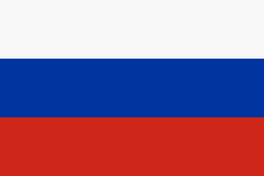Donate to Support Supercluster
Your support makes the Astronaut Database and Launch Tracker possible, and keeps all Supercluster content free.
SUPPORTSupercluster on Patreon
Your support makes the Astronaut Database and Launch Tracker possible, and keeps all Supercluster content free.
SUPPORTThis goes
to space
Kondor Satellite
Kondor-FKA (Federal Space Agency) is a civilian radar sensing satellite designed by Russian space company NPO Mashinostroyeniya (NPOM) for the Russian Federal Space Agency (ROSCOSMOS), to be used in counterpart to other Kondor series satellites. The mission’s objective is to capture high-resolution observational data of soil moisture and meteorological conditions while aiding military surveillance.
Kondor-FKA operates in a sun-synchronous orbit with an altitude between 512 and 515 km, an inclination of 97.4°, and an orbital period of 94.8 minutes. Observations are made with a minimum revisit capacity between 2-3 days.
Courtesy of ESA.
On this
rocket
Soyuz 2.1a/Fregat
The Soyuz 2.1a/Fregat-M rocket as it is known to Roscosmos, the Russian federal space agency, is also called the Soyuz ST-A when used by Arianespace for European launches.
It is built by the Progress Rocket Space Centre (TsSKB-Progress) under the jurisdiction of Roscosmos.
The Soyuz 2.1a/Fregat-M provides medium-lift capability.
It can be launched from all three Roscosmos launch sites: the Baikonur Cosmodrome in Kazakhstan, the Plesetsk Cosmodrome in western Russia, and the Vostochny Cosmodrome in eastern Russia.
For Arianespace, it is primarily launched from Guiana Space Centre in South America, making it the only -- at present -- rocket to launch from more than one continent.
Image credit: CC "Yuzhny" / TSENKI / Roscosmos
From this
launch site
Site 1S - Vostochny Cosmodrome, Tsiolkovsky, Amur Oblast, Russian Federation
Vostochny Cosmodrome
When the Soviet Union collapsed on December 25th, 1991, Russia inherited the Union's space program... and instantly found themselves with a problem. Their primary launch site was not in their country but in what was now the newly independent Kazakhstan.
The two countries entered into a mutually beneficial agreement for Russia to lease the Baikonur Cosmodrome, with a current annual payment of $115 million (USD).
To reduce their reliance on a foreign country’s launch facilities, Russia committed to building a new cosmodrome, this time in the Russian Far East.
Vostochny, which means “eastern” in Russian, is a primarily commercial launch center, though military missions can take place from the site.
Proposals call for the cosmodrome to eventually host 44% of all Russian launches, including human missions.
Numerous delays with construction and corruption have delayed the spaceport’s high flight level use. Of the originally planned seven (two for crew) launch pads, only one has been built for Soyuz 2, a second is under construction for the Angara rocket, and no crew launch pads have been started.
The one completed pad is Site 1S, “S” standing for Soyuz, which conducted its first launch in April 2016.
Image: A Soyuz rocket on Site 1S. Credit: Kremlin
GET THE SUPERCLUSTER APP
THE SUPERCLUSTER PODCAST
A podcast exploring the amazing milestones that changed space history, the wildest ideas that drive our future, and every development in this new Golden Age of Space.
Donate to support
Your support makes the Astronaut Database and Launch Tracker possible, and keeps all Supercluster content free.
SupportCOPYRIGHT 2021 SUPERCLUSTER LLC

